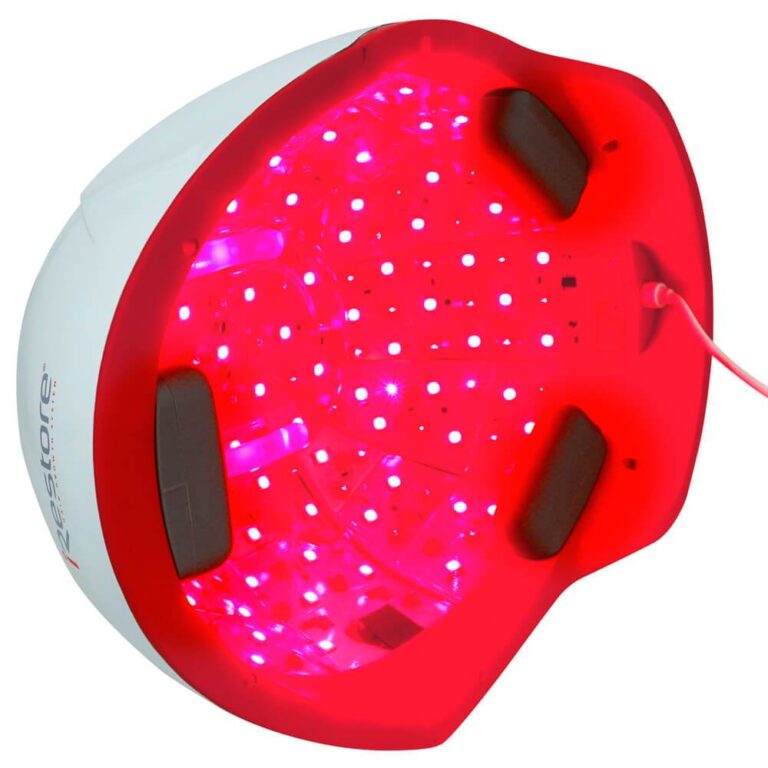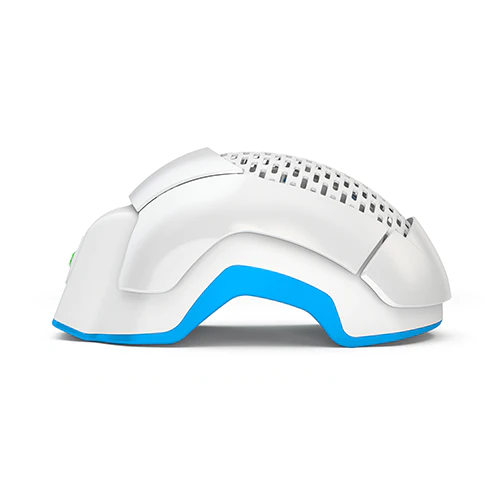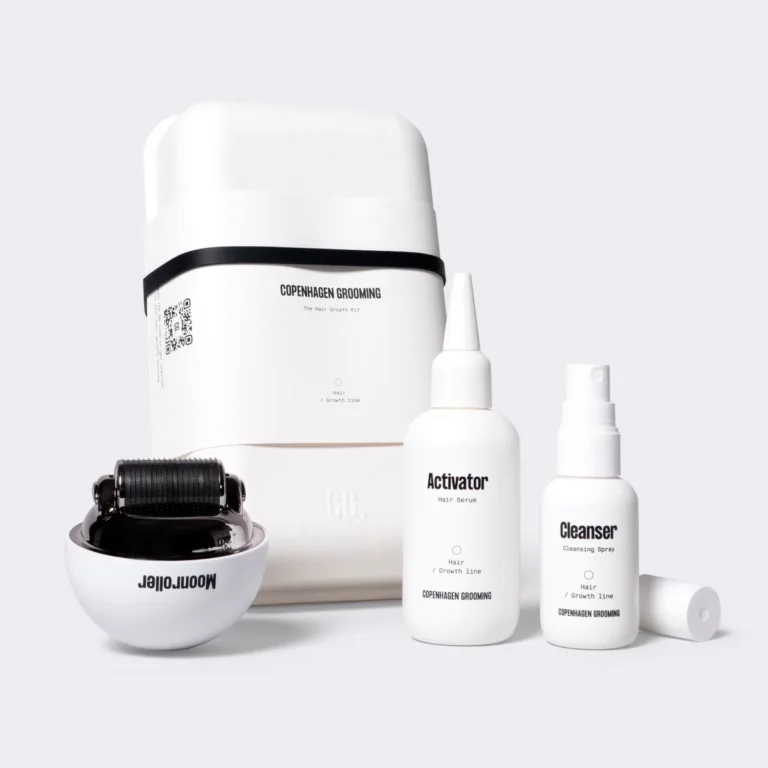Nanoxidil Review: What Is It & Is It Better Than Minoxidil?
In a world where 80% of men and 50% of women experience hair loss issues, it’s no surprise that newer hair regrowth treatments, such as nanoxidil, have emerged on the market.
While minoxidil has been the most popular topical treatment for decades, nanoxidil is slowly catching up.
In this nanoxidil vs. minoxidil review article, we’ll discuss the similarities and differences between both drugs. We’ll talk about their effectiveness and side effects to help you make an informed decision. So, keep reading for all the details!
What Is Nanoxidil?
Nanoxidil is an over-the-counter hair loss and regrowth treatment for both male and female pattern baldness. The former is also used to treat alopecia areata, a condition in which the immune system attacks the hair follicles. As a result, it causes significant baldness.
The product dates back to 2011, when Divine Skin Inc. wanted to create a product similar to minoxidil but with minimal side effects. The drug also aims to have greater efficacy than minoxidil.
Unlike the latter, nanoxidil focuses on treating both the vertex and hairline areas. A perk that can potentially replace finasteride. The former is a prescription medication used to treat receding hairlines. However, it poses various unpleasant risks because of its DHT-blocking action.
Does Nanoxidil Work?
Yes! Clinical studies of nanoxidil have shown promising results. The drug helped decrease hair shedding in patients experiencing hair loss. Additionally, nanoxidil helped increase the hair density.
Let’s discuss some of the clinical studies of nanoxidil in further detail.
Nanoxidil Studies
While further research is needed to determine nanoxidil’s effectiveness, studies suggest that this drug can show significant hair growth results with little to no side effects.
For instance, DS Laboratories conducted a study in 2017 to assess nanoxidil’s safety and efficacy. The former included 18 male volunteers with active hair loss. After 90 days of nanoxidil solution treatment, 89% of the participants had hair growth.
However, only 17% experienced significant results, while the rest had moderate to minimal growth. That indicates that the drug’s effect varies from one individual to another.
Still, only one patient experienced scalp irritation after four weeks of treatment. Reducing the drug’s dosage to half cleared the side effects within two days.
What’s more, nanoxidil’s magic doesn’t stop at men. A study done on 49 female pattern hair loss patients showed that nanoxidil can treat the former condition. The participants applied the drug twice daily for three months.
All the individuals experienced a significant decrease in hair shedding. Not only that, but the treatment resulted in increased hair density and mass for all the patients!
How Long Does It Take Nanoxidil to Show Results?
It’s difficult to determine how long it takes nanoxidil to work since more research is needed about this drug.
However, like most hair loss treatments, you can expect noticeable improvement after three to six months. That’s as long as you follow the instructions provided by your healthcare provider or the product’s label.
Having said that, the time it takes for nanoxidil to show results can vary from person to person. It’s also possible that you won’t experience any hair growth when using nanoxidil.
Nanoxidil vs. Minoxidil: What Are the Differences and Similarities?
Both nanoxidil and minoxidil are over-the-counter hair regrowth medications used to treat baldness in males and females. Additionally, both drugs are available as topical treatments that you can directly apply to the scalp.
While those medications work in similar ways, they have several differences. Those include:
Molecular Structure
For those who don’t know, “molecular structure” refers to the chemical composition of a compound. It describes the elements that make up a molecule and their locations with respect to each other.
Nanoxidil has a similar structure to minoxidil. However, minoxidil has an extra carbon chain than nanoxidil. A carbon chain is formed when carbon atoms bond through sharing electrons, producing a straight line.
Since nanoxidil is one carbon chain short, it has a lower molecular weight than minoxidil. A perk that facilitates nanoxidil skin absorption compared to minoxidil.
Mode of Action
Both drugs are ion-channel openers. They facilitate the flow of ions in and out of the cells by changing the charge of the cell membranes. Still, nanoxidil and minoxidil work in different ways.
Nanoxidil’s Mode of Action
Nanoxidil increases the blood flow to the follicles, facilitating nutrient delivery. Consequently, it nourishes the hair.
What’s more, nanoxidil has anti-inflammatory properties and reduces oxidative stress, both of which contribute to hair loss. The latter happens due to free radicals, which are oxygen atoms with an extra unpaired electron. Those reactive species are unstable.
To overcome that issue, the reactive oxygen species either gain or lose an electron.
The problem is that they give or take unpaired electrons from cellular structures. That includes proteins, lipids, DNA, and more. As a result, they alter the cells, eventually damaging them. Nanoxidil can stop that reaction, protecting the hair follicles.
Minoxidil’s Mode of Action
Minoxidil, commercially known as Rogaine, shortens the telogen phase, the resting stage of hair, which can cause it to fall out. Not only does that cause the follicles to enter the anagen, or growth, phase faster, but minoxidil also prolongs this stage!
Once you apply this treatment to your head, a scalp enzyme adds a sulfate group to minoxidil, changing it into its active form. Minoxidil sulfate inhibits the male sex hormones’ action on hair follicles, which is the root cause of hair loss in men.
Active Ingredients
Rogaine only has 5% minoxidil as the active ingredient. The rest of the solution contains solvents and other additives.
Nanoxidil lotions, on the other hand, contain other active elements that stimulate hair growth. Those include:
- Retinol (reduces DHT production)
- Caffeine (stimulates blood circulation)
- Adenosine (upregulates vascular endothelial growth factors, which are chemicals that stimulate hair growth)
- Azelaic acid (reduces DHT production)
- Piroctone olamine (antifungal)
Available Forms
It’s no surprise that minoxidil is available in various forms compared to nanoxidil since the latter is relatively new. You can find Rogaine sold as foam or solution. Additionally, minoxidil is available as a tablet.
On the other hand, nanoxidil is only sold as a solution, and you can use it the same way as minoxidil. All you do is apply the product to your dry scalp and rub it gently. Then, wait until it’s completely absorbed, usually around four hours, before washing your hair.
Is Nanoxidil Better Than Minoxidil?
Nanoxidil can potentially be a better treatment than minoxidil. Thanks to its lower molecular weight, this drug has a better skin absorption capacity than minoxidil.
What’s more, nanoxidil isn’t only used as a treatment for male and female pattern hair loss. Some people also use it to treat alopecia areata. Combine that with its low side effect risks, and you can see why nanoxidil can replace minoxidil in the future.
However, it’s too soon to determine whether the former is more effective than the latter. That’s because more studies are needed to know nanoxidil’s long-term effects.
Nanoxidil Side Effects
Generally, nanoxidil is safe, producing little to no side effects. Still, like any chemical out there, nanoxidil can cause side effects. Those include:
- Itching
- Scalp irritation
- Allergic reactions, like hives and swelling
Is Nanoxidil FDA Approved?
No, nanoxidil is a relatively new hair growth treatment that’s not yet FDA-approved. Still, nanoxidil products are available on the market since they’re over-the-counter treatments.
Generally, OTC drugs don’t need FDA approval as long as they meet safety requirements.That doesn’t mean nanoxidil won’t be FDA-approved in the future since the former process takes time.
Conclusion
When comparing nanoxidil vs. minoxidil, you can see that both products are similar. They’re OTC medications used to treat hair loss in both males and females.
Still, nanoxidil has a lower molecular weight, a different mode of action, and contains other active ingredients. Those perks can make nanoxidil slightly more effective than minoxidil. Not to mention, this drug causes fewer side effects.
That said, it’s best to consult your healthcare provider or a dermatologist before choosing which product to use.







